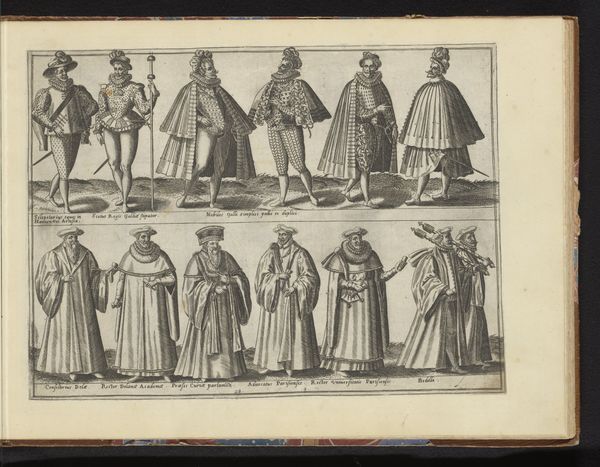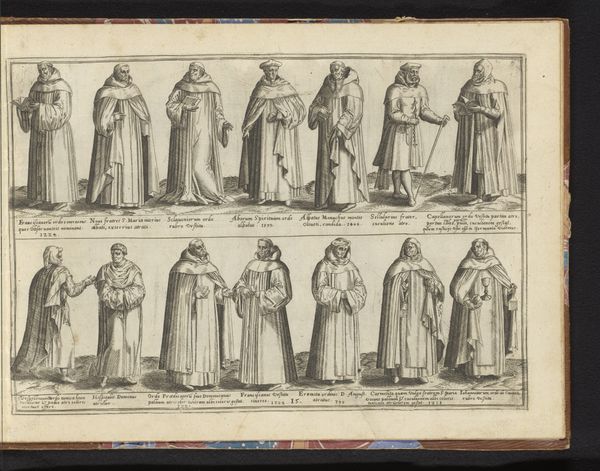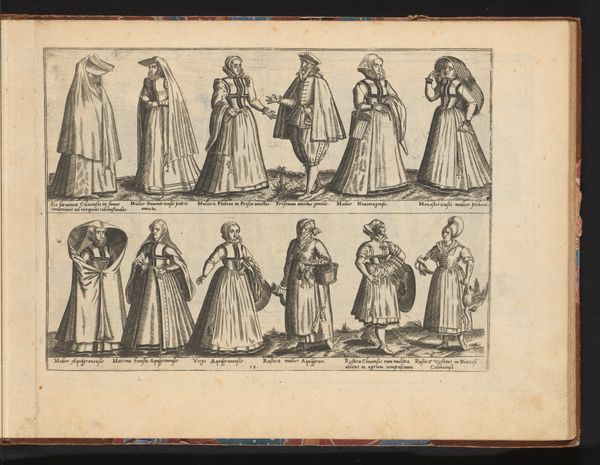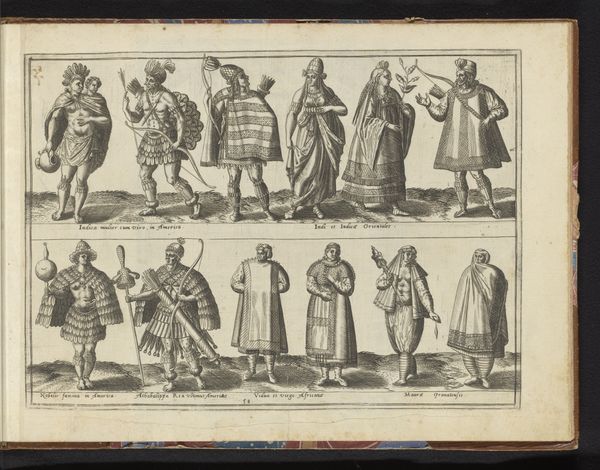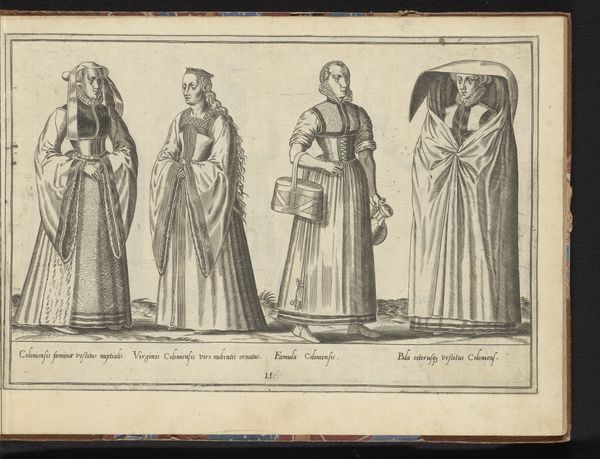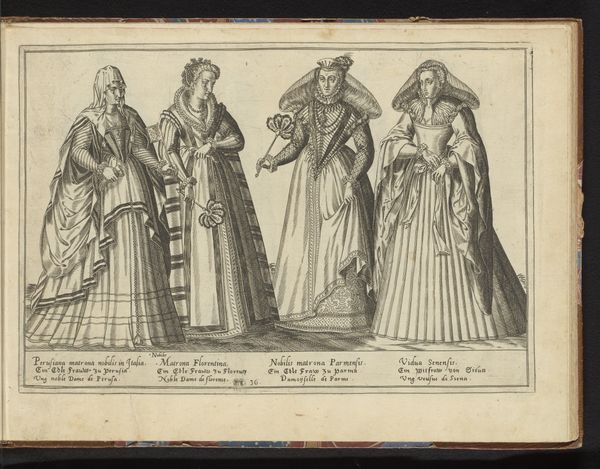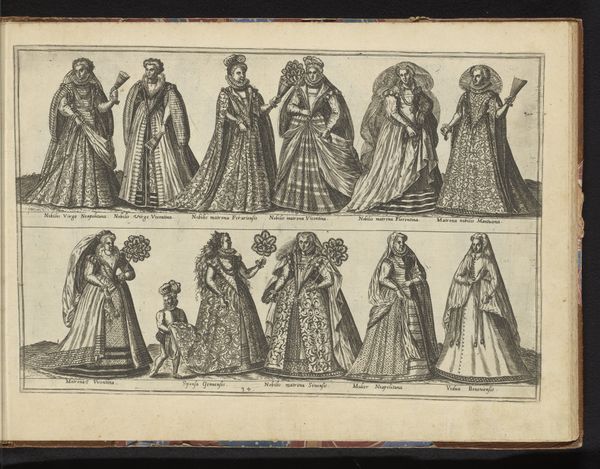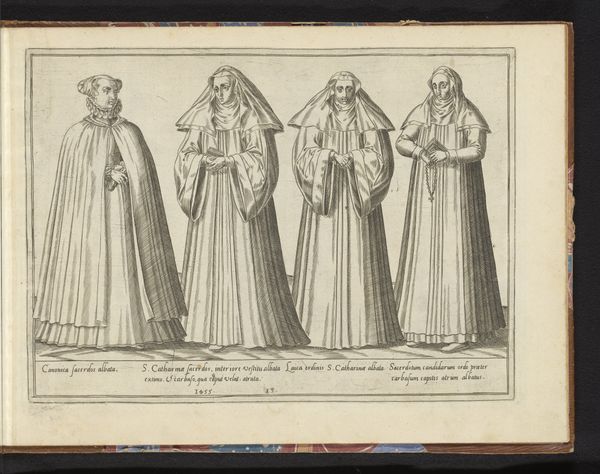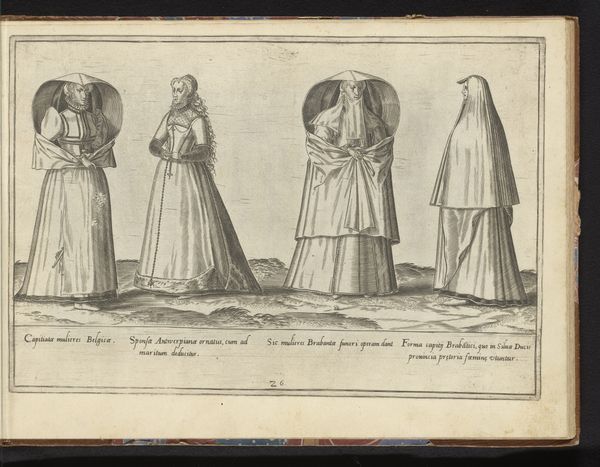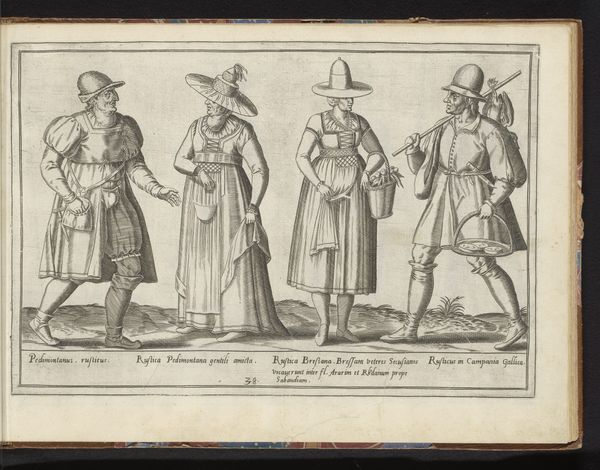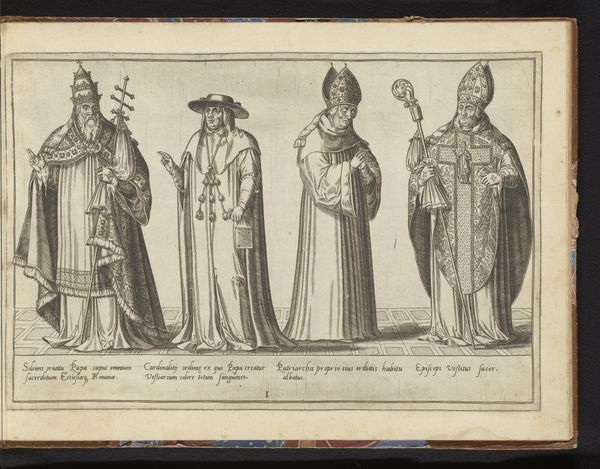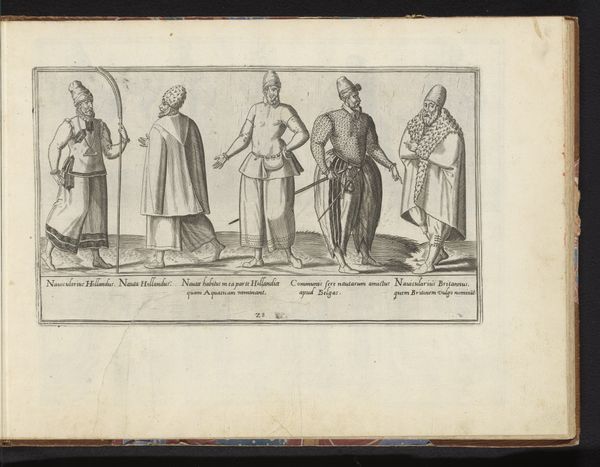
Twaalf vrouwen uit verschillende standen, gekleed volgens de mode van ca. 1580 in.... 1581
0:00
0:00
print, paper, engraving
#
portrait
# print
#
mannerism
#
paper
#
coloured pencil
#
pen and pencil
#
genre-painting
#
northern-renaissance
#
engraving
Dimensions: height 265 mm, width 360 mm
Copyright: Rijks Museum: Open Domain
Editor: So, here we have a print titled "Twelve Women of Different Status, Dressed According to the Fashion of 1580" by Abraham de Bruyn, created in 1581. It looks like an engraving on paper. The women, all lined up in two rows, seem so serious and dignified. What symbols do you see at play here? Curator: This image, beyond simply cataloging fashion, acts as a potent signifier of social order. Consider the very act of depicting these women in such a regimented way. It’s not just about clothes; it’s about communicating the stratified nature of 16th-century society. Each garment, each accessory, operates as a visual marker of status and belonging. Editor: So, the clothes themselves are symbols? Curator: Precisely. Think about the fabric, the cut, even the embellishments. Each choice broadcasts a woman’s position within her community. Do you see how some figures possess richer, more elaborate attire? That’s deliberate. What do the headdresses, for example, communicate? Editor: Some seem more ornate, maybe signifying wealth? It's like a visual language. Curator: Exactly! This "visual language" speaks volumes about cultural values and expectations of women in that era. The print becomes a historical document, revealing societal obsessions with appearance and hierarchy. It serves as a visual memory of social practices. What emotional resonances does it create for you? Editor: It makes me consider how we "perform" identity even today through what we wear. So, it’s about more than just clothes; it’s about the power of images to shape our understanding of the past. Curator: Indeed. Recognizing those persistent visual echoes enhances our perception of historical continuities, reflecting cultural patterns across the ages.
Comments
No comments
Be the first to comment and join the conversation on the ultimate creative platform.
